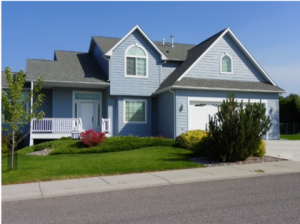
The world of real estate is full of acronyms. Those who work in the business get used to these ‘call letters’, and don’t often give them much thought. For someone who’s new to the home buying process, the various acronyms can be confusing if not simply overwhelming. Understanding key acronyms and basic definitions is an excellent way to gain the knowledge you need to help you buy with confidence. When it comes to mortgage funding, PMI is an acronym you may hear mentioned by lenders. You may have already asked yourself, “What is PMI, and do I need it to buy a home?”
What is PMI & Do I Need it to Buy a Home?
PMI stands for Private Mortgage Insurance, and is often required for a home buyer to purchase alongside their mortgage if their down payment is below 20%. Whether your down payment is less than 20% because you just don’t have the cash, or you have a reserve but want to save it for home improvements after you move in, PMI allows for a lower down payment towards a house.
Typically, when you purchase an insurance policy, you do so to protect your family and property against loss due to damages. PMI works a bit differently. Mortgage lenders are taking on a risk by funding the purchase of a home. If circumstances arise where you can’t pay your mortgage, the lender faces losing a lot of money should the loan go into default.
 To help lessen the risk on a property where more than 80% of the sale price is funded by a loan, PMI is required. While you the home buyer pay for this insurance, either as a separate policy payment or incorporated into your monthly mortgage bill, you won’t receive a benefit if a claim is filed. Your lender will. Essentially, PMI helps balance out the risk to loss ratio of a mortgage for the funding institution.
To help lessen the risk on a property where more than 80% of the sale price is funded by a loan, PMI is required. While you the home buyer pay for this insurance, either as a separate policy payment or incorporated into your monthly mortgage bill, you won’t receive a benefit if a claim is filed. Your lender will. Essentially, PMI helps balance out the risk to loss ratio of a mortgage for the funding institution.
Even though the beneficiary of any claims would be the lender, there are benefits for buyers to get PMI as well. Namely, if you aren’t able to cover the standard 20% down payment, getting a PMI policy will help you get into a home of your own sooner than saving over the long term.
Many home owners also need to only carry PMI with their mortgage loan for a certain period of time. The key is to watch the market and keep appraised of your home’s value compared to your total mortgage loan amount. With appreciation, your home will rise in value. Once your loan to value ratio has shifted so you owe less than 80% of the property value, you can seek refinancing of your loan to do away with the PMI policy, and possibly get a better interest rate, effectively lowering your mortgage payment as well.
 There are different types of PMI policies, each one catering to various needs and situations of the buyer and the lender. Learn more about this common element of mortgage funding with this article by Investopedia. Whether you need PMI or not, when it’s time to buy a home, work with a Realtor® who has a passion in helping their clients find solutions towards achieving their home dreams. Get the conversation started with Matt Haviland. Give him a call today at 609-338-3773 or send him an email. The Haviland Group and Keller Williams Realty are here to help you find the right home from start to finish.
There are different types of PMI policies, each one catering to various needs and situations of the buyer and the lender. Learn more about this common element of mortgage funding with this article by Investopedia. Whether you need PMI or not, when it’s time to buy a home, work with a Realtor® who has a passion in helping their clients find solutions towards achieving their home dreams. Get the conversation started with Matt Haviland. Give him a call today at 609-338-3773 or send him an email. The Haviland Group and Keller Williams Realty are here to help you find the right home from start to finish.

Please note: I reserve the right to delete comments that are offensive or off-topic.